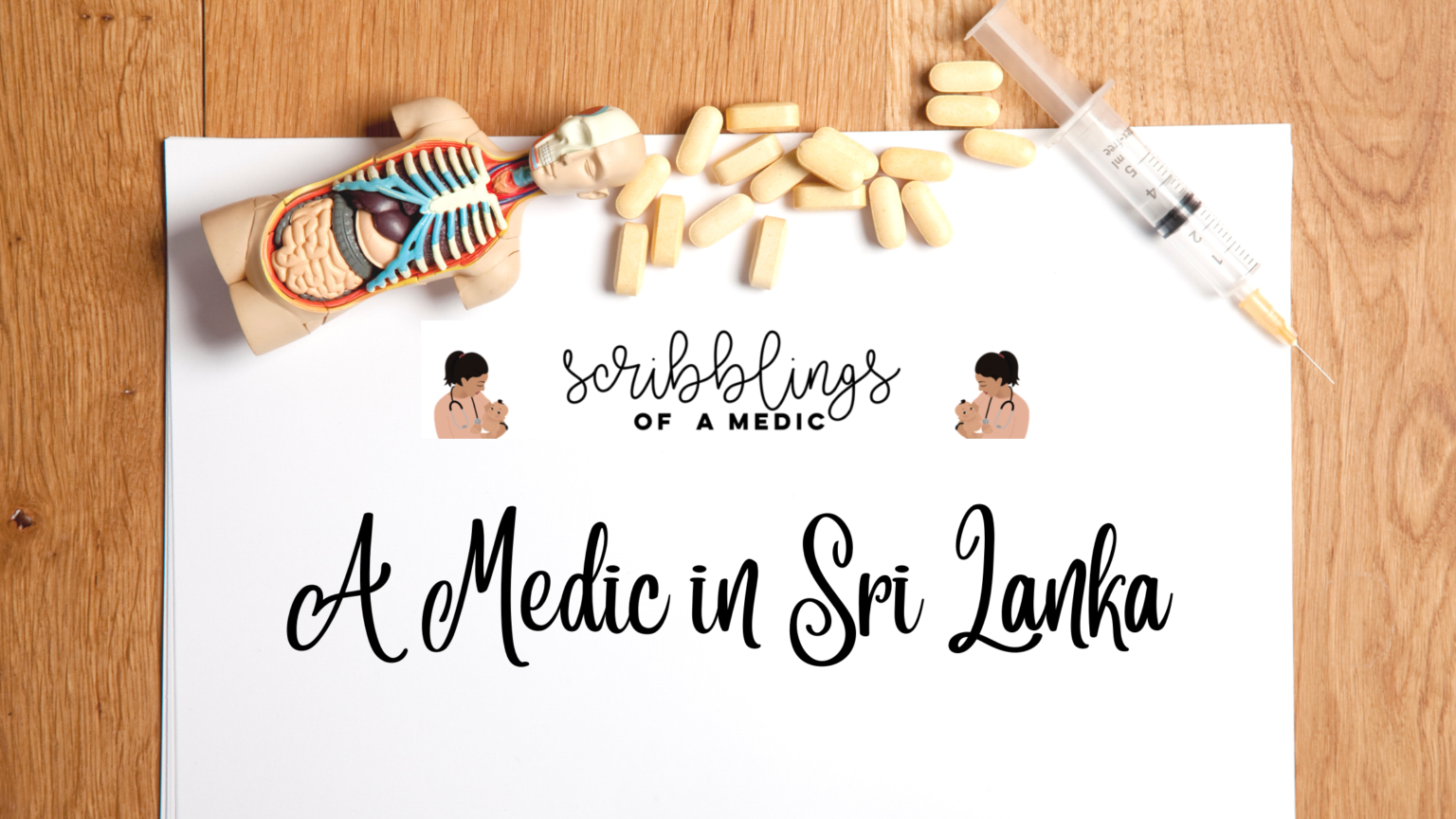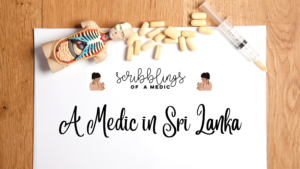I came. I saw. I conquered.
That is the attitude you have to walk in with and go out with. Vivas are personal, because its just you in there. So if you move with confidence (no matter how nervous you are on the inside), then you’ll succeed.
I’ve passed the theory exams. Now what?
Once you pass the medical track theory exams you are eligible to sit the medicine and paediatric viva. Once you pass the surgical track, you can participate in the GynObs and surgical vivas.
ERPM Part B has one long case and 2 short cases. In the long case you take a thorough history (usually 15 mins) and then answer questions whilst in the short cases you do a systems examination (5 to 7 mins) and then answer questions, except in the surgical short cases where you do as many stations as possible (ideally more than 4). Usually medicine and paeds is on the same day, and surgery and Gynobs is on one day. Between the two exams on a day you will get a few minutes break to catch your breath and eat something.
ERPM Part C is the emergency track which is a face-to-face questioning for 20 minutes. The medical examiner and paeds examiner sit together (so they have about 10 minutes each) and then the surgical and GynObs examiner sit together (10 minutes each).
To find out the aggregate you need to pass each part, just click on the link below:
Classes. Again?
Unfortunately yes. There are specific points that the examiners expect you to address, for example:
- Febrile convulsions – are there open fires? wells? (Need to advice the mother). The child should also not be vaccinated for JE (1 yr vaccination)
- Diabetics – Rule out associated co-morbidities such as CVS (MI, HF) and cholesterol. My patient had an MI with Type 2 diabetes as well and complained of a stiff shoulder and I got extra points because I said that it could possibly be adhesive capsulitis (associated with T2DM).
The schedule for the viva classes is much less hectic than the theory classes as it only includes the 4 main subjects. Check out my schedule here: Viva timetable. Essential questions to be asked during the history and the essential things to look for during clinical examination are mentioned by the lecturers. There is also the opportunity to get up on stage and go through histories.
Practice makes perfect.
The best clinical practice would be to go on hospital visits.
- After writing a letter to the DGHS, you can apply for vacancies at a local hospital. How much clinical experience you get at these hospital varies, some people had better experiences than others. As soon as you finish the theory exam apply for this as vacancies fill up quickly.
- The good intern programme also has a skills programme for pre interns which got a lot of positive feedback. Check their website for registration details. http://shri.lk/skills-programme/skills-programme-for-pre-intern-medical-officers/
- Sri Jayawardenapura hospital also has paid internships which you can go and apply for at the administrative office. I did this, but you have to realise that you need to go and see patients yourself. Take the initiative, ask some of the doctors around for good cases and go take histories and do examinations on these patients. This is definitely self-directed learning.
- If you have any connections now would be a good time to use it. The best experience you can get is at a government hospital so if you have any connections with consultants at these hospital now is the time to use them.
My experience
I was assigned to Teaching Hospital Batticaloa for my viva examinations. You get about a week’s notice so act fast to book a place to stay and your transport. You need to wear formals for these exams, including sari for the ladies and shirt with tie for the guys. Take a white coat with you as you may have to wear it. Take pens, but no paper. You can leave your bags outside, but again don’t take any valuables with you.
My group and I were a bit blindsided when the examiner in charge told us that we would need to speak tamil to the patients and will not be provided with a translator. This left us puzzled because we were made to understand that previous batches all got translators.
Part B
Paediatrics:
The examiner was nice enough to give me a translator. Long case – complex febrile convulsions (asked about open fire places/wells, and quickly advised the mother as well), how I’d manage this emergency (check CBS, midazolam IV/ Diazepam PR, best is lorazepam which is not available in SL). Check the CHDR of the child, my patient had never been given one and the examiner only realised this when I asked, so plus points! My long case went very well, the examiner was glad I checked the social situation of the child at home, including family history and vaccination and I also ruled out other causes of convulsions. Short cases – child with hydrocephalus (Neurological exam and measure OFC, check VP shunt and development). Child with urticaria secondary to treatment for pityriasis Alba (Dermatologic examination, antihistamines, allergy testing). My short cases were a bit odd as I didn’t get even one routine CVS/respiratory/abdominal case, so be prepared!
Medicine:
Here my examiner for my long case was really nice and gave me a sinhalese speaking patient who had an MI with a background of diabetes and hypercholesterolaemia. After checking out the usual history of presenting complaint, rule out family history, check clinic follow ups and do a SYSTEMS ENQUIRY (I found adhesive capsulitis so plus points). For my short cases (slightly tougher) – I was told to do a respiratory exam – it was pulmonary fibrosis secondary to rheumatoid arthritis (once I saw the RA, the diagnosis was pretty evident, but apparently there was an effusion that I didn’t find!). My other case was lower limb neurology, the patient had a foot drop (go through differentials). The short cases were harder for me because the patients spoke tamil and they refused to give me a translator so even instructing the patients was difficult. I literally burst into tears post-viva. I don’t know how I passed.
GynObs:
This is different in terms of you get an obstetrics case for 20 mins and a gynaecology case for 20 mins. You have to take a history and do an examination for them both. I got the head of the department as one of the examiners. For my obstetrics case I got premature rupture of membranes in an elderly multigravida mother (ask all the dribbling questions, chorioamniotis/UTI questions). On examination, I was just asked to check the SFH, lie of the baby and hear for foetal sounds (basically find the ant. shoulder). For the gynaecological case, I got PV bleeding and was asked to list my differentials (according to the age of the patient) – ectopic pregnancies, miscarriage and cervical cancer, etc. For examination, had to do a PV and speculum examination (both were normal). Also check the LMP and say you’ll do an hCG and an USS, if suspecting placenta praevia, then you wouldn’t do a blind PV. The examiners were quite nice, and it went quite well.
Surgery:
For my long case I got jaundice, so you had to rule out if it was acute or chronic, painful or painless. It was basically obstructive jaundice secondary to gallstones. I had to discuss courvoisier’s law and the management of the patient. For my short cases they gave me a thyroid case to do examination, a paraumbilical hernia, cervical lymphadenopathy (rule out malignancy) and an above the elbow POP in a child. The short cases went by very fast and the lecturers didn’t have a lot of patience so make sure you get your answers out fast.
Part C
In addition to assessing your clinical knowledge, this is the time to let your personality shine through. This was the best part of the exam for me, and I really enjoyed it.
Medicine – My emergency situation was that on a ward round my consultant collapses what are your differentials, what is your emergency management, if its’ an MI what will you give, he had streptokinase given a month prior, can you give it again? Contraindications to streptokinase and how do you prepare it? What is your management if its’ a stroke?
Paediatrics – Seizure differentials and management. Meningitis management and hypoglycaemia/electrolyte imbalances management.
GynObs – I had the sweetest consultant question me. He questioned me on ectopic pregnancy management and shoulder dystocia. Ended up asking me whether its easier to deliver the posterior arm or whether to do the corkscrew movement, and I honestly said that I had never realistically done this, but I am presume it would be the corkscrew (Wrong!). Because I told him that I had never done the procedures, he was glad and began to tell me why the delivery of the long posterior arm is easier.
Surgery – I got trauma, and they wanted me to discuss how I would manage an RTA with head injury (wanted ABCDE, but don’t just straight away say ABCDE – more explain I would first check if the patient is conscious and able to speak, i.e. airway).
Tips:
- Study a bit of tamil – major plus points if you get assigned to a hospital with majority tamil speaking patients.
- Take some toys for the Paeds patients and after you finish your exam, give the toys to be kept by the paediatric patients.
- Take your own stethoscope, tendon hammer and any neurological equipment that you may need!
Important links
- Skills expected at the viva
- Viva timetable
- http://shri.lk/skills-programme/skills-programme-for-pre-intern-medical-officers/
** UPDATE – with the upcoming vivas looming around the corner I decided to upload a compilation of previously asked viva topics. No one can say what will come because it does depend on what types of patients they have in the ward, so it all comes down to just being prepared! Thank you to all my colleagues who contributed 🙂
Click on this link: New Viva topics





